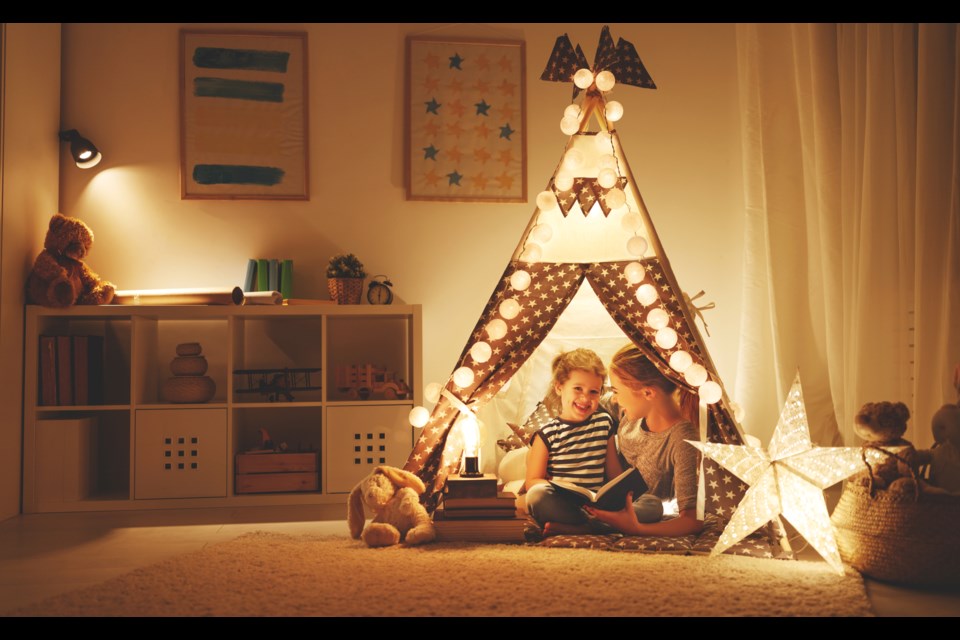A year into the COVID-19 pandemic, the impact on Canadian’s mental health is starting to be uncovered.
The Centre for Addiction and Mental Health (CAMH) – Canada’s largest mental health and addiction teaching hospital and world-leading research centre in this field – recently released the findings for a six-part survey completed throughout 2020. The data found Canadians reported lower anxiety when there were fewer COVID-19 cases and looser public health restrictions throughout the summer. However, anxiety became more prevalently reported in the fall, when cases of the virus increased and stronger restrictions were implemented.
Ashley Gobin – a registered provisional psychologist with McAtee Psychology in Calgary, who has more than ten years of experience working with children, adolescents, families, and adults – said she, too, has noticed the pandemic’s effect on mental health.
“I know a lot of individuals have talked about how they’re feeling more symptoms of depression now,” she said. “I’ve seen this huge shift where we’ve moved from kind of this anxious area to more depressed now. And I think, obviously, it has a lot to do with the pandemic.”
While more research is needed to uncover the long-term mental health impact of the pandemic, there are steps to take at home that may address some of these issues. One such method is creating a calming space devoted to relaxation.
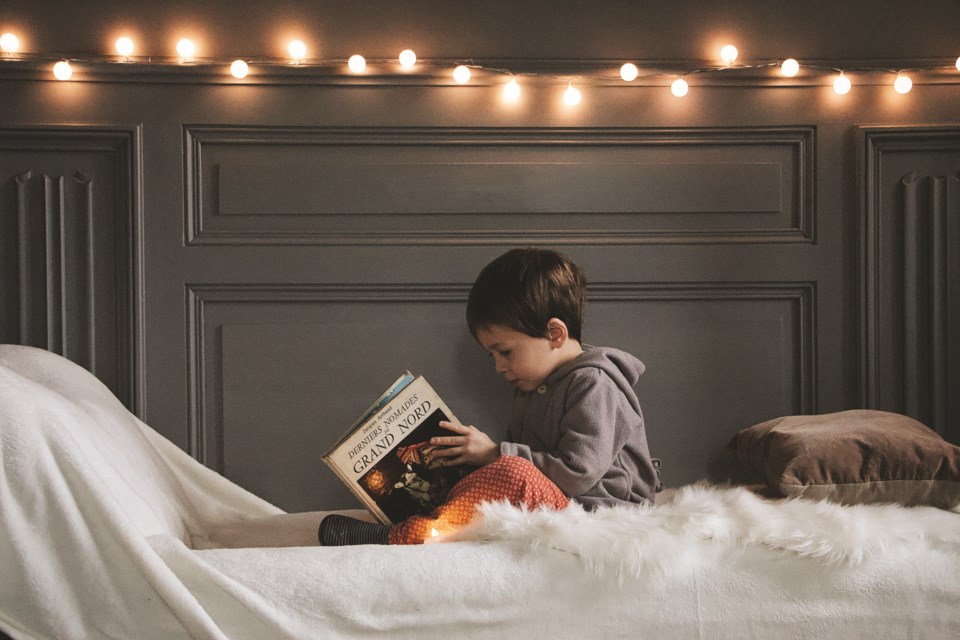 Relaxation rooms are a good way to help handle the increased stress, anxiety and depression associated with the COVID-19 pandemic
Relaxation rooms are a good way to help handle the increased stress, anxiety and depression associated with the COVID-19 pandemic“In my ideal environment in my house – I don’t have room for it, but if I did – I would have a sensory room where I would have soft lights and something a little bit more calming for an individual,” Gobin said.
Calming spaces are areas within the home dedicated to relaxing and recharging. Sensory rooms are similar, but specifically include sensory toys/items that can help individuals better focus. Such rooms are often helpful for individuals with sensory issues, but can be adapted to suit the needs of almost anyone.
Gobin said a calming space doesn’t need to be an entire room but can be a corner, closet or another small area in the home. The only requirement is that space is away from distractions and noise, and is free from visual and physical clutter.
Calming spaces will differ for everyone, but they should be inviting, comfortable and a place you want to spend time in.
“I think the nice thing about it is, you don’t actually have to go out of your way to find anything,” Gobin said, adding it can be as simple as bringing in big pillows to sit on.
For adults and teens, a calming space can be as simple as rolling out a yoga mat or adding a bean bag chair. For children, it can be a blanket fort, a play tent or a cardboard box.
“I’ve seen kids create a little spaceship. I went to…one of the parents’ homes once and they had a huge cardboard box, but it was like a large house that they had created. And [the child] could go inside, and they had all their toys in it and it could just be a nice little calming area,” Gobin said.
Whether your calming space is a room or a corner, start by assessing the lighting. Soft, red-rich lighting mimics the low light of evening when our natural circadian rhythm helps us relax and unwind as we prepare for sleep.
Gobin recommends installing a dimmer switch to allow lowered lighting in the space.
“I think [lower light] is really important, especially with the amount of time that we’re now spending on computers,” she said. “I know I’ve talked to a lot of individuals who have said that they’ve been getting increased headaches or their eyes are a little bit more sore.”
If installing a dimmer isn’t feasible, a string of twinkle lights along the walls or ceiling and curtains to help block out sunlight are a great alternative.
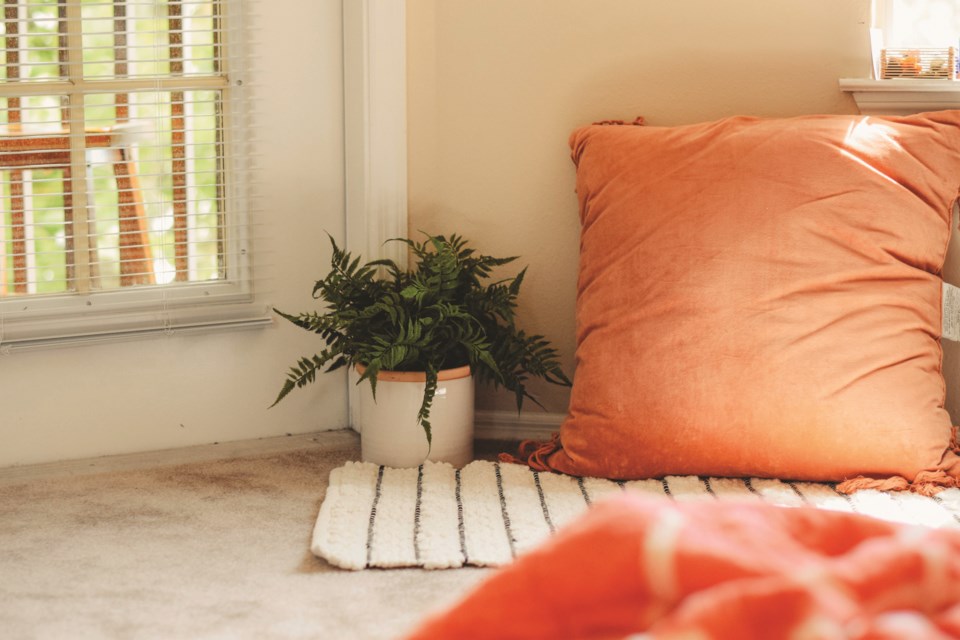 Pillows, cushions and blankets are some important and obvious additions to a relaxation room or space.
Pillows, cushions and blankets are some important and obvious additions to a relaxation room or space. Colours also play a role in how we feel, as soft hues such as blues, greens and purples tend to encourage relaxation. While painting may not be practical for all calming areas, it is best to note the colour of the objects or art included in the space.
Scent is another consideration when creating a calm space, as it can help boost serotonin –a neurotransmitter responsible for regulating mood, digestion and sleep, among other things.
“Scent is a really interesting thing,” Gobin said. “It can be something that can trigger memories – sometimes it can be positive memories, sometimes it might be not so positive memories. And it depends upon the individual, too. I know for myself, peppermint when I’m working, it’s something that actually kind of awakens the body a little bit more.”
Gobin said she loves diffusers and uses them within her home and her workspace. She said finding small ways to help yourself feel better is essential, as the pandemic has made it more difficult to find things rewarding.
The sound in the space should also be an intentional decision. White noise, rain hitting the roof and nature sounds tend to be what most people think of for relaxation, but the sound can be anything the individual finds soothing. Noise-cancelling headphones are ideal for some, while others may be drawn to classical music or waves crashing against the shore.
“Within counselling sessions, I allow the child to kind of be in control of that. Whatever sound they would like,” Gobin said. “I’ve had children who, they might be older, but they wanted R&B or they wanted rap because it’s comforting to them.”
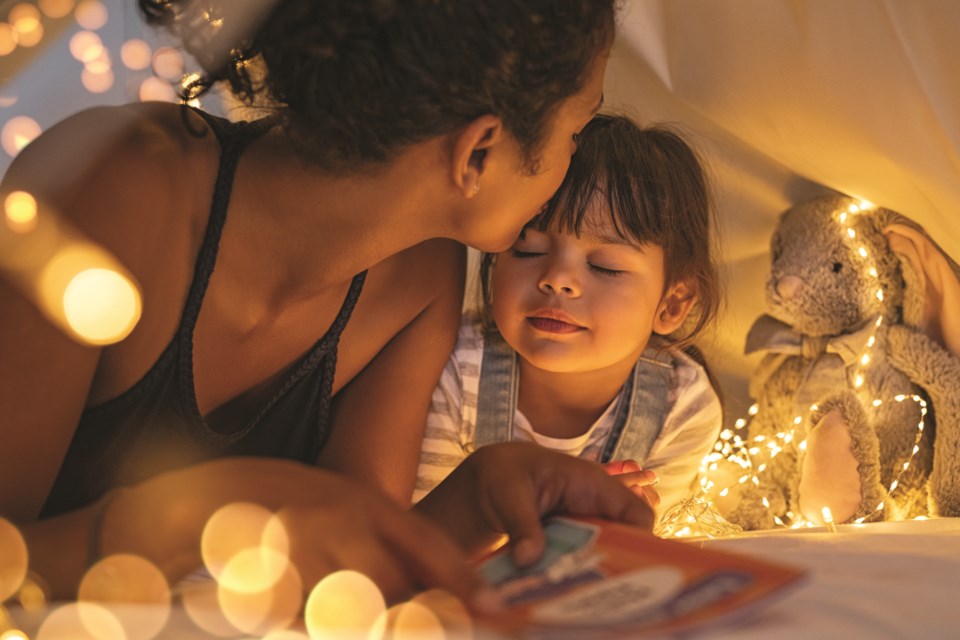 There are many things to consider when setting up a relaxation room or space in your home, such as a the area's colour scheme, lighting whether the room is technology-free, and much more.
There are many things to consider when setting up a relaxation room or space in your home, such as a the area's colour scheme, lighting whether the room is technology-free, and much more.According to CAMH, clutter can cause feelings of stress, fatigue and depression. While removing clutter is essential, this doesn’t mean everything needs to go. The items in the space should be well-organized and elicit positive feelings from the individual using the space. For children, that might be a favoured stuffed animal to hug. For adults, it could be a cosy blanket to wrap up in.
Fidget toys can help when struggling to maintain our attention or when something is “boring” us and are another item to consider.
“If we think about it, children can only stay still for a period of time, so I think it is really important that you’re having something [in the space],” Gobin said, adding fidgets helps with sensory regulation and restlessness.
The fidgets are used by children and adults to distract the part of the brain that is “bored,” allowing other parts to better focus. These toys include fidget spinners – which were an inescapable trend back in 2017 – cubes with buttons to press and maneuver, multi-use silicone bubbles poppers that mimic bubble wrap and much more. Even a ball of playdough to roll around or a homemade sensory jar filled with water and glitter can do the trick.
“Everybody is very different in terms of sensory,” Gobin said.
Weighted blankets are a popular sensory item that can be very comforting; however, Gobin warns the weight needs to be correct for the individual. She suggests researching or consulting an occupational therapist before using a weighted blanket.
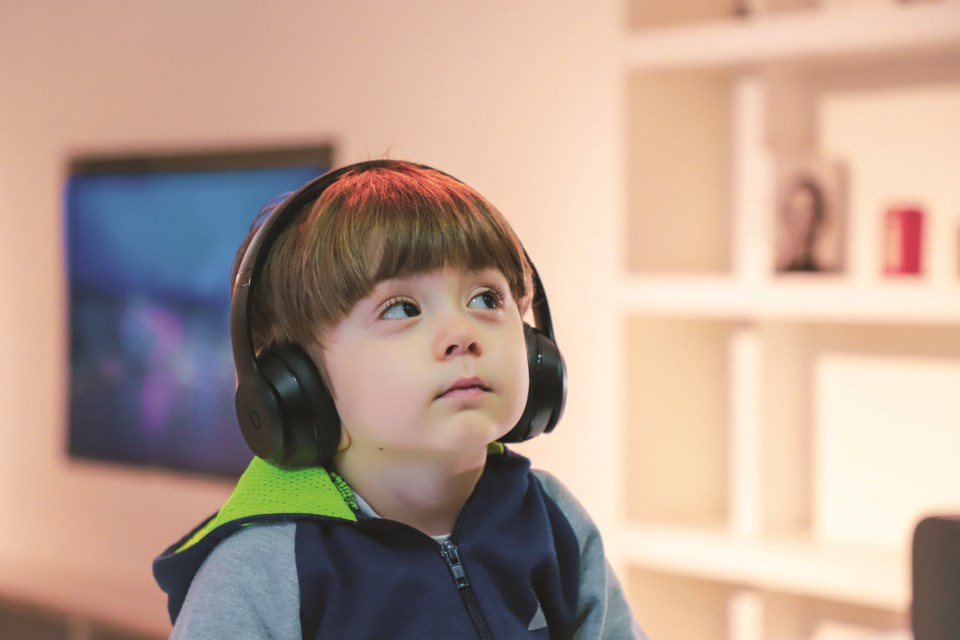 Sound plays a significant role in helping people feel relaxed and is another component of a relaxation space that people can take into account.
Sound plays a significant role in helping people feel relaxed and is another component of a relaxation space that people can take into account.Books, kaleidoscopes, lava lamps, board games, building blocks, a notebook and pen to doodle or journal with or a bottle of bubbles are other examples of things that might be useful. The intention is to cater the space to the individual with things that help them unwind.
Gobin suggests making the calming area a tech-free zone to encourage relaxation.
When we use technology such as phones or tablets, the brain increases dopamine – a neurotransmitter that plays a role in how we feel pleasure.
“That’s why individuals crave technology so much. I don’t want to say it’s a drug, but it acts like it a little bit,” she said. “We constantly are craving that stimulation that technology provides because of increases of dopamine to the brain.
“That’s why we sometimes see children struggle to get off of technology, at times, because that’s where they’re getting that boost of dopamine.”
While meditation is likely the first thing most adults think of when it comes to calming spaces, it isn’t an activity that works for everyone.
“We sometimes think self-care has like has to specifically be meditation. Even for myself, I find deep breathing doesn’t make me feel the best…but I’m big on physical exercise,” Gobin said. “Even things like doing like a little 20-minute workout, where I’m in my living room jumping around and my dog might sit on my yoga mat. But that’s just what makes me feel a little bit better.”
Be it baking, taking a warm bath, putting on a face mask, getting out for a walk or spending time on a hobby, the goal of self-care is to intentionally carve out time for yourself.
“Adults have really, really busy lives,” Gobin said. “And, now, a lot of individuals are working from home. For example, I watch my partner and he works all day in his office. Maybe he’ll go out, make lunch and then he’ll go back to his office. That can seem really defeating over a period of time and that’s when you really need a change within the environment.”
